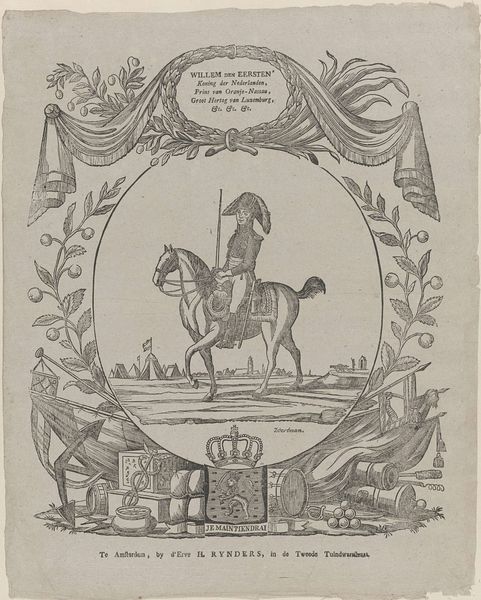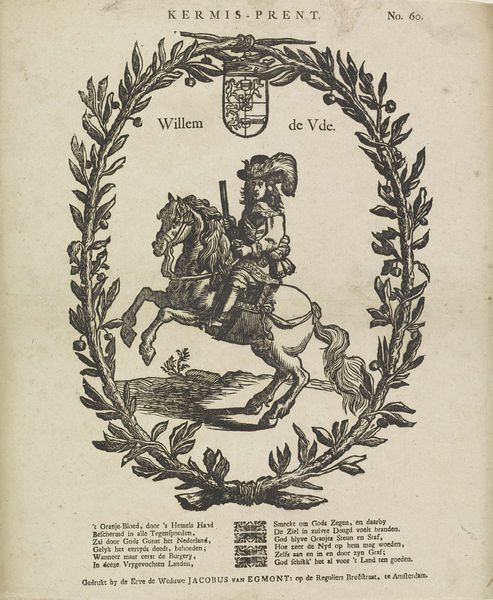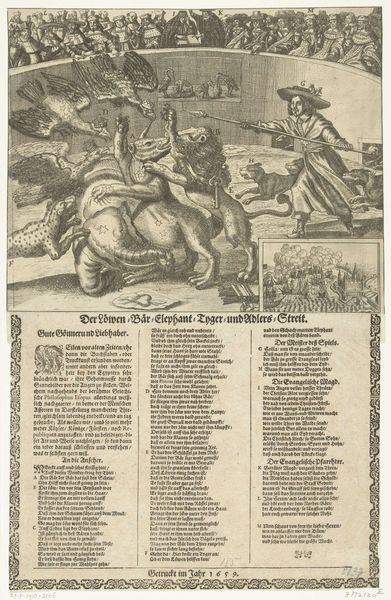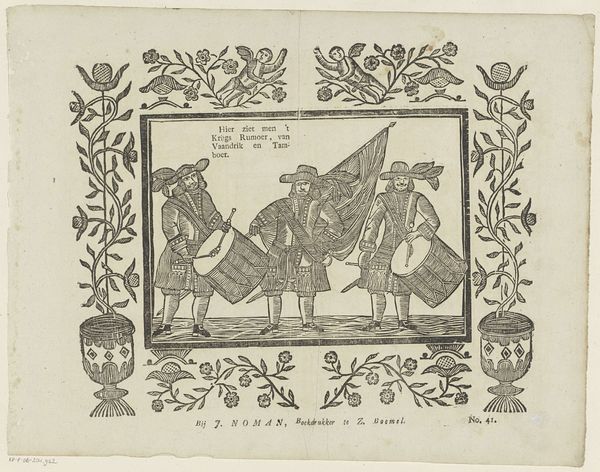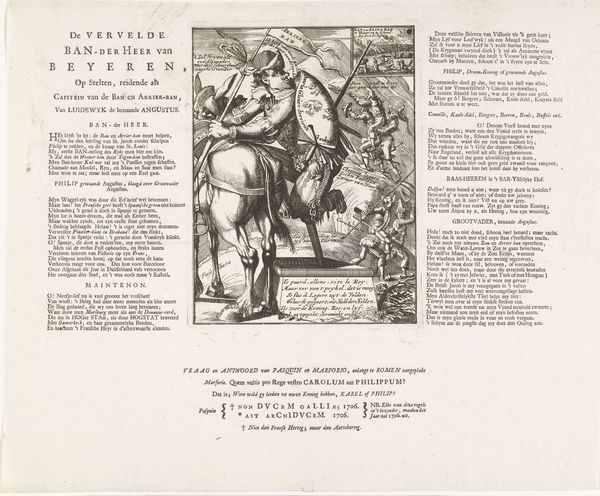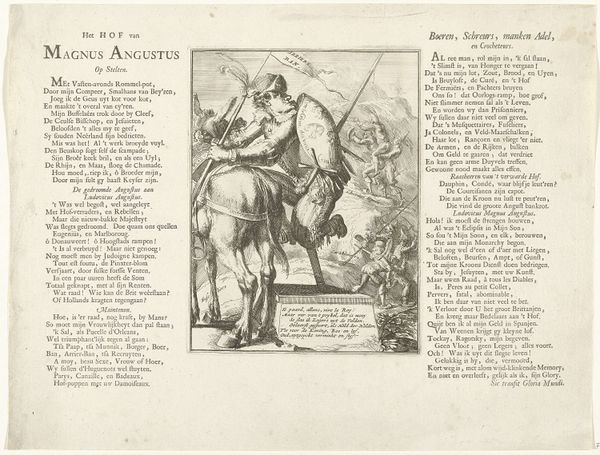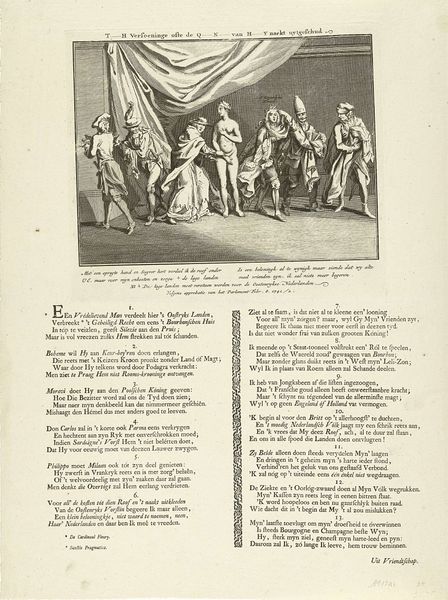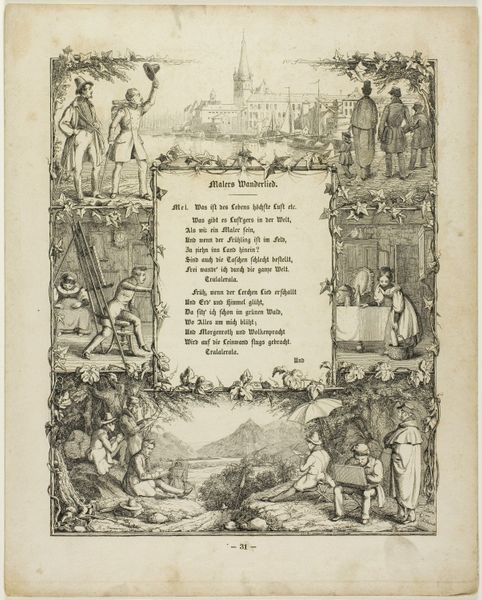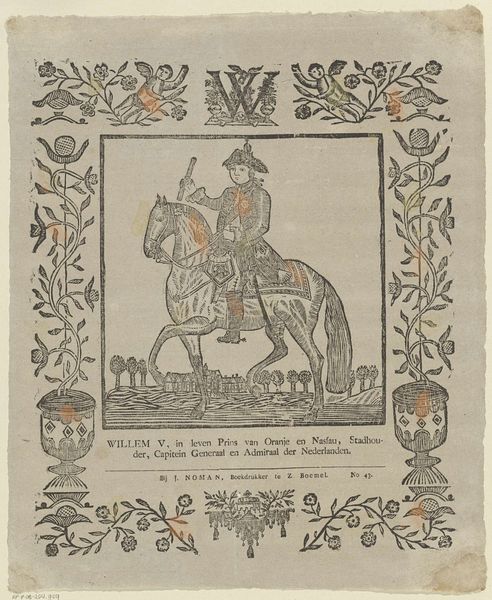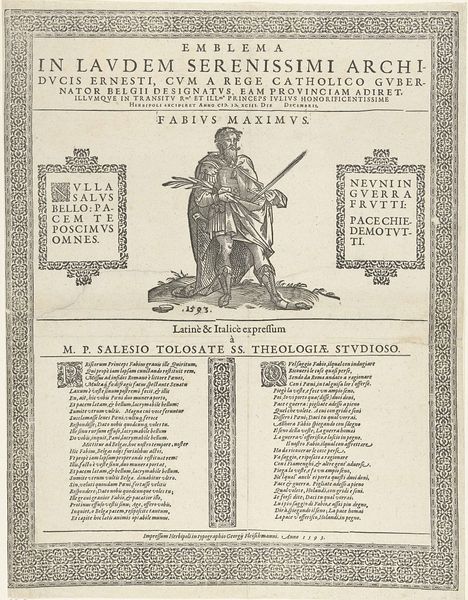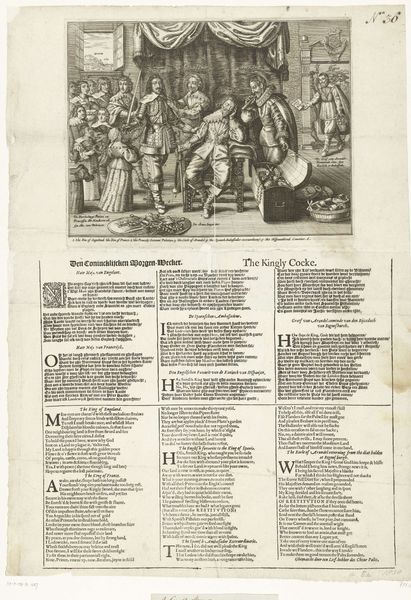
Dimensions: height 325 mm, width 417 mm
Copyright: Rijks Museum: Open Domain
Editor: This is "De nieuwe Sint Nicolaas-prent," created sometime between 1761 and 1804 by Erven de Weduwe Jacobus van Egmont. It’s an engraving. The two figures are so stiff and formal, like they're acting in a play. What stories can you uncover within it? Curator: The key lies in the cultural memory embedded in St. Nicholas, a figure transformed over time. See how he's portrayed here? Not the jolly, rotund Santa we know, but a more regal, almost judicial figure, and accompanied by his servant. This imagery speaks to the expectations and rewards of childhood, ingrained over generations. What does the presence of the book and the rod suggest to you? Editor: Hmm, one offers knowledge and the other, perhaps, discipline? So, a duality, a system of reward and punishment connected to St. Nicholas? Curator: Precisely. These are symbols, immediately understood by the intended audience, etching morals into young minds. Look at the placement of Amsterdam in the background, can you tell what significance it might carry in relation to St. Nicholas? Editor: It grounds this symbolic scene in a tangible reality, giving it relevance in the children’s immediate world. St. Nicholas, as a symbol, is tethered to their own place. Curator: Yes, it creates a cultural continuity, a thread connecting them to traditions. This print serves as a cultural mirror, reflecting values and beliefs across generations. Editor: That's fascinating! So it's not just about the picture itself, but what it represents, its function as a tool to preserve tradition and morals. Thanks for opening my eyes to this. Curator: And thank you, because, as a child’s first entry into iconography, it's a compelling entry point into culture!
Comments
No comments
Be the first to comment and join the conversation on the ultimate creative platform.

